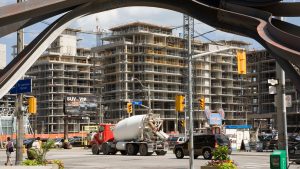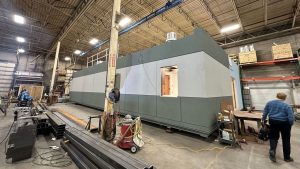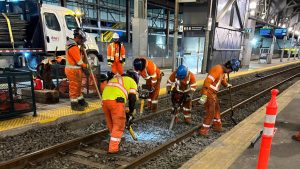Dufferin Construction health and safety manager Jim LaFontaine has trained over 700 drivers during his decades in the construction sector and knows paving safety probably as well as anyone in the province, but sadly, when he runs his health and safety seminars it’s not lessons from his long past but rather recent examples of jobsite injuries he often talks about.
LaFontaine spoke on Night Safety — Staying Safe at the recent Ontario Asphalt Paving Council (OAPC) Spring Operations Seminar held in Toronto April 6. The OAPC, formerly the Ontario Hot Mix Producers Association, is a council of the Ontario Road Builders’ Association (ORBA).
LaFontaine didn’t have to dig too deep into his archives to find examples of jobs gone awry — of meticulously prepared Internal Traffic Protection Plans, for example, that were exposed as faulty.
Consider the injury suffered by a Dufferin foreman on a night paving job on Highway 401 near Cambridge last June. The foreman was sitting in a Dufferin pickup truck working on time cards and production reports in an area that looked to be protected from oncoming traffic. No one expected a drunk driver would emerge from an ONroute service centre driving west on eastbound lanes, enter the construction zone behind a moveable barrier wall and crash into the foreman’s truck. The Dufferin manager was injured and the driver charged with impaired driving and other offences.
"Even with all of the training, all of the things we do out there in terms of planning, using book 7 (Ontario Traffic Manual Book 7 — Temporary Conditions), things still go wrong, the drivers still don’t respect us out there," he said. "The OPP talks about the four big killers, alcohol, speed, distracted driving and racing, and we face that every night when we are doing highway paving."
Ontario has an extensive traffic and construction-sector regulatory regime that guides the industry but pavers need to establish their own cultures and additional protocols to minimize risk, said LaFontaine. Construction Regulation 104 may offer guidance in preparing a drive-through operation and Regulation 45 advises on adequate lighting on night jobs, he noted as examples of regulatory controls, but there is no law that can ensure managers are guaranteed to imprint the safety message during their daily five-minute pre-shift risk-awareness meetings with work teams.
An attitude of vigilance has to be ingrained within every supervisor and worker on the job, every day, he said.
"A key thing is fighting complacency and the fatigue factor that goes into engagement," said LaFontaine. "Night work is different. Your sleep cycle is disrupted, after two or three days and nights you could be down four, eight, 12 hours of sleep, and then you’re disengaged and you may miss things. You may nod off, you may be distracted, you are sleep deprived, your diet is a little off, so as a worker, you’ve got to combat that."
LaFontaine addressed safety measures pavers can take to protect their workers from the driving public and also emphasized hazards "inside the barrels" and back at the plants as workers perform tasks between jobs.
Again, he had recent headlines to refer to as he offered the OAPC delegates examples of mishaps. ORBA may have had a big hit with its series of videos urging motorists to drive carefully around road crews in the past year but that didn’t stop one driver from rear-ending a Dufferin pace vehicle that had slowed to 60 or 70 km/h escorting a vehicle attempting to access a paving project on Highway 427 just last November.
The Dufferin driver required medical attention and was on light duty for several months.
"If you’ve seen the ORBA videos, they are posted online and the ministry posted them through all the ONroute stations, it’s about getting respect from the motorists," said LaFontaine. "Those videos are trying to change the behaviour of the motorists out there. So when they see a construction zone, they don’t get frustrated or angry at the guy holding the Stop/Slow sign, they understand, hey, I better be prepared because traffic is going to come to a stop or I need to shift my lane, because things are moving and changing up ahead."
Another recent tragic incident prompted Dufferin to create its Wait for the Wave protocol. Dufferin policy now says equipment operators must keep a distance of at least 10 feet from workers on foot until eye contact and confirmation is received from the worker on foot with a hand wave. And on the other side, the 10-foot rule indicates workers must not approach machines without making eye contact and receiving confirmation from the operator.
"You gotta make sure he knows you’re there," said LaFontaine.










Recent Comments
comments for this post are closed